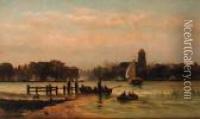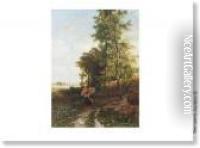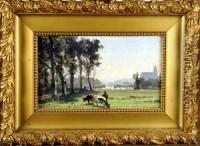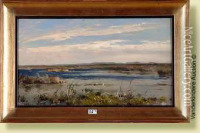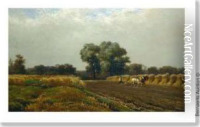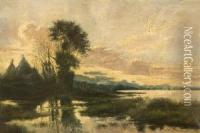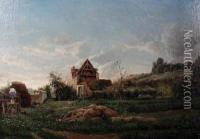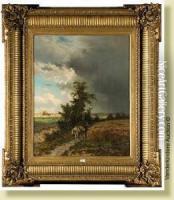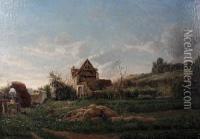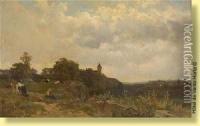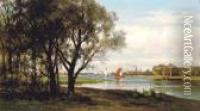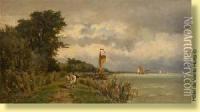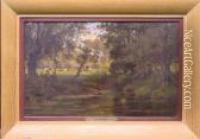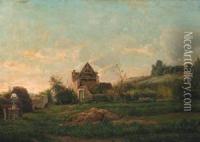Edmond De Schampheleer Paintings
Edmond De Schampheleer was a Belgian landscape painter born in Brussels on December 4, 1824. He was a student of François-Joseph Navez, a neoclassical Belgian painter, and also studied under Balthasar-Paul Ommeganck, who specialized in pastoral landscapes. De Schampheleer’s education under these artists greatly influenced his artistic style, which was characterized by a meticulous approach to detail and a fondness for natural landscapes.
De Schampheleer's works often depicted the Belgian countryside, and he was particularly skilled in capturing the interplay of light and shadow in his scenes. His paintings are known for their tranquil and idyllic qualities, featuring pastoral settings with cattle, rural laborers, and serene waterways. He painted en plein air, meaning he worked outdoors to directly capture the effects of natural light on the landscape, a practice that was becoming increasingly popular among artists during this period.
Throughout his career, De Schampheleer exhibited his work at various salons and exhibitions. He became a member of the Royal Academy of Belgium, which was a testament to his recognition in the Belgian art scene. Despite the rise of avant-garde movements in the late 19th century, De Schampheleer remained committed to his classical landscape style.
Edmond De Schampheleer's contribution to Belgian art was significant in the 19th century, and his work is still appreciated by art historians and collectors today. He left behind a legacy of serene and picturesque landscapes that continue to evoke a sense of peace and nostalgia for the Flemish countryside. The artist passed away on January 9, 1899, in Etterbeek, Belgium.
